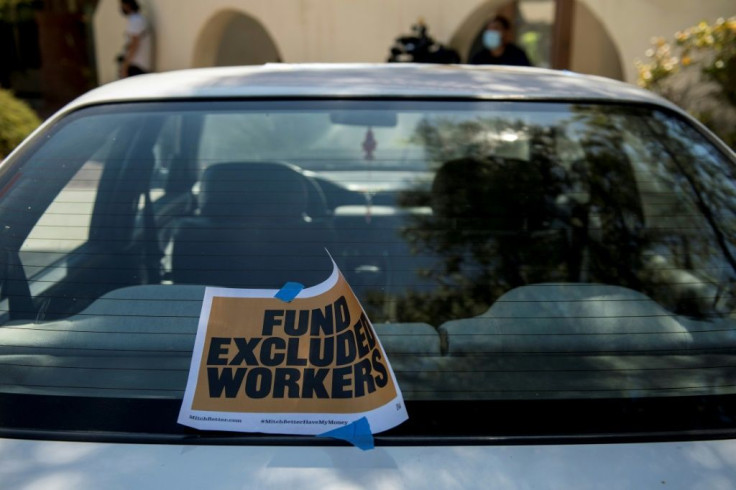New US Jobless Claims Drop Amid Fears Of Throttled Recovery
New claims for unemployment benefits have dropped below one million in the United States for the second time since the coronavirus pandemic struck, although quirks in the data may account for the decline.
The Labor Department reported 881,000 new filings for aid in the week ended August 29, but the report is the first to use a new seasonal adjustment formula, which analysts say may account for much of the week-on-week drop.
Nonetheless, the result was better than expected. The data showed the insured unemployment rate fell 0.8 point to 9.1 percent with 13.3 million people receiving benefits in the week ended August 22, the latest for which data was available.
However, using non-seasonally-adjusted data, initial claims actually increased to 1.6 million from 1.4 million the week prior, including 759,482 people who filed last week under the Pandemic Unemployment Assistance program (PUA) aimed at those not normally eligible for such aid.
No matter how it is interpreted, the result was worse than any single week of the 2008-2010 global financial crisis, reflecting the ongoing damage from business shutdowns that began in the US in March in an effort to stem the pandemic.
"The fact that we still have all these people in the system looking for benefits just shows we have a large number of people not attaching to the labor force," William Spriggs, chief economist at the AFL-CIO trade union federation told AFP. "We're looking at long-term unemployment as a huge issue."
Tens of millions of people have lost their jobs since the pandemic hit the world's largest economy, but states' efforts to reopen and the $2.2 trillion CARES Act stimulus package has been credited with spurring some rehiring.
A report from outplacement and coaching firm Challenger, Gray & Christmas released Thursday outlined the scope of job cuts in the US, showing a 231 percent surge compared to the same period of 2019, already surpassing the previous full-year record set in 2001.
But the pace of the cuts has started to come down, the report found, with the August total of 115,762 announced layoffs down 56 percent from July as more states started to reopen.

However, key provisions of the CARES Act, such as an extra $600 per-week in payments to the unemployed and a program of loans and grants to keep small businesses afloat, expired at the end of July. And lawmakers in Congress have not been able to reach an agreement with the White House on an extension, despite lengthy negotiations.
In an analysis, Rubeela Farooqi of High Frequency Economics said there were signs in the claims data that the very tentative recovery was already waning.
The total number of people receiving aid as of August 15 was 29.2 million, an increase of nearly 2.2 million from the week before that was driven mostly by new claims filed under the PUA.
And the drop in insured unemployment may also be indicative of people who have been receiving benefits for so long, they have exhausted their allocation.
"The labor market remains exposed to weak demand and virus containment restrictions -- especially service sector employment -- which are resulting in permanent job losses that will have implications for the pace of recovery going forward," Farooqi said.
Separate Commerce Department data released Thursday showed the trade gap jumping to $63.6 billion in July on a surge in US imports, much more than economists had expected.
The 19 percent jump in the deficit from June came despite American exports rising as well, as firms continue to recover from trade disruptions brought about by border closures and business shutdown orders brought on by the pandemic.
The Institute for Supply Management also reported slowing growth in the non-manufacturing sector, with its services index still expanding but slipping 1.2 points to 56.9 percent.
Despite the stumble in the pace of growth, the survey's chair Anthony Nieves told reporters "all signs indicate unless we have a derailment in the next few months, that we will continue to see this growth going forward."
© Copyright AFP 2024. All rights reserved.




















